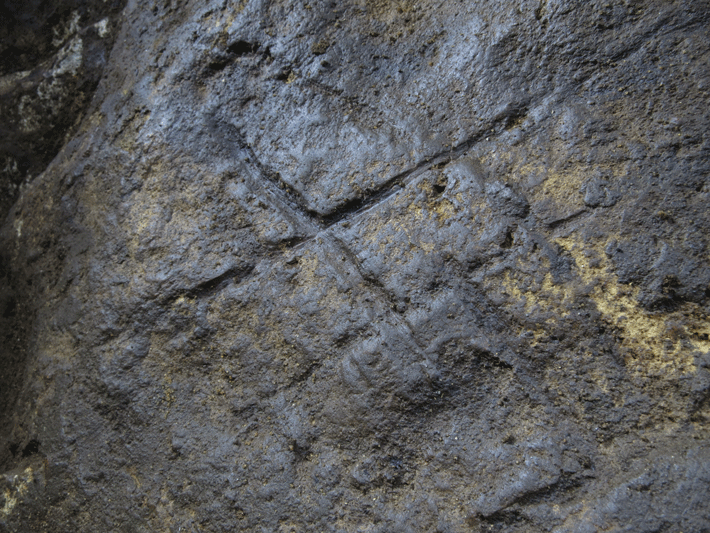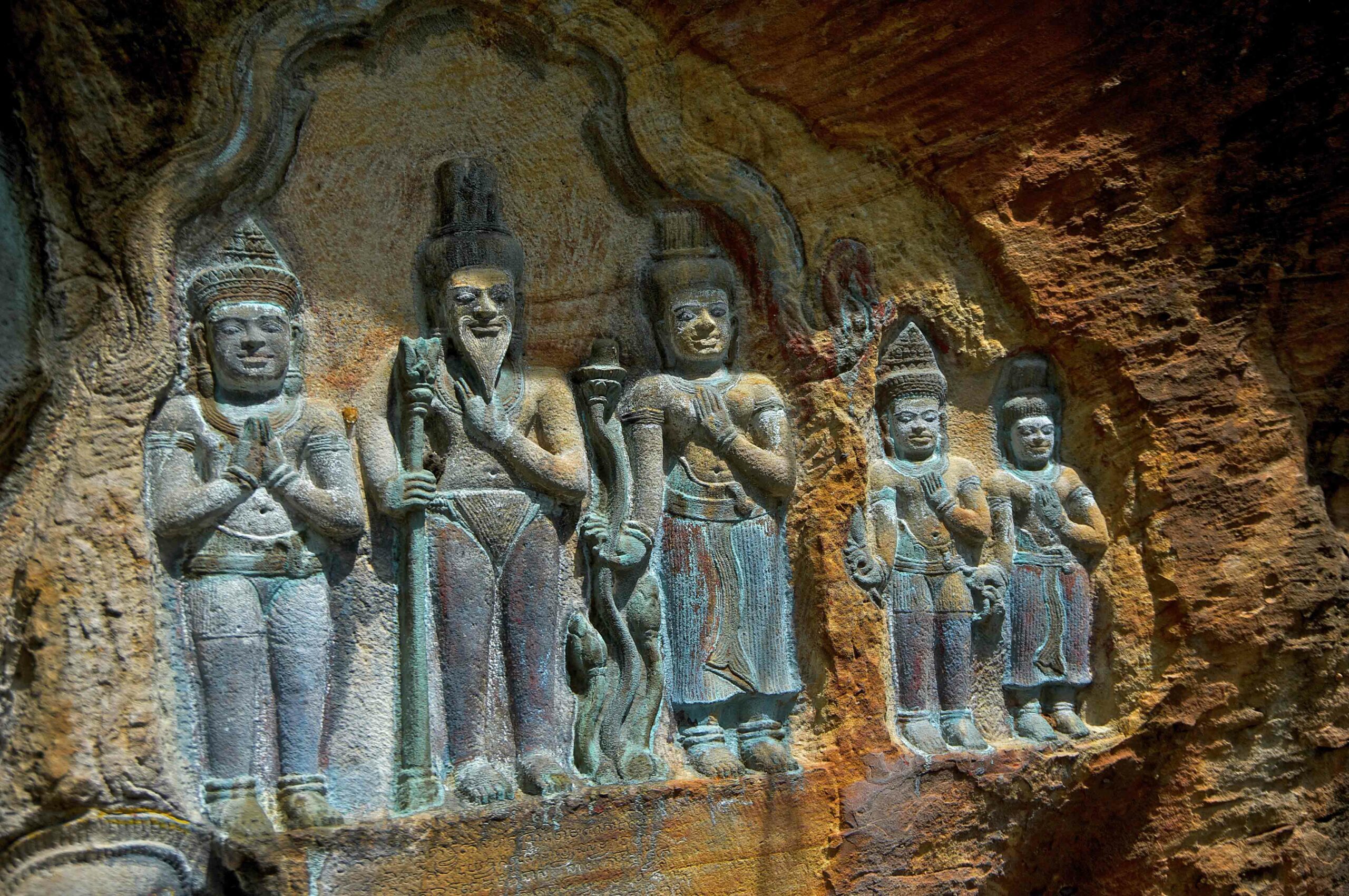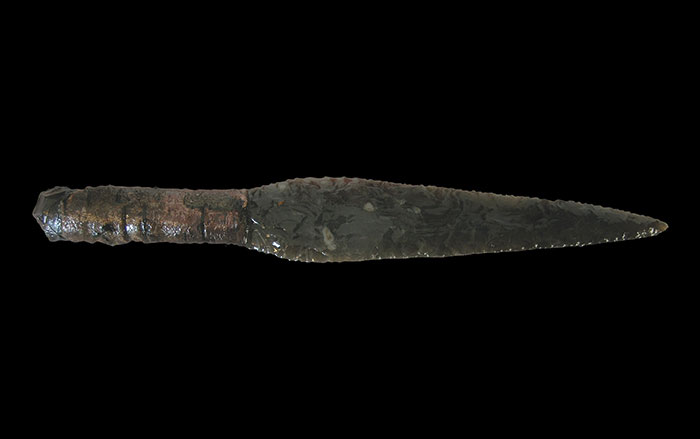
An artistic design made up of overlapping lines carved on a cave wall was discovered buried under sediment containing Neanderthal artifacts in Gorham’s Cave, Gibraltar. Paleolithic art expert Francesco d’Errico of the University of Bordeaux analyzed the engraving and reproduced the process of making it. His analysis shows that a stone tool was used, and that each line was carved precisely, indicating that it was made by an experienced artist. The design at Gorham’s Cave is the clearest evidence yet that Neanderthals made artwork, but whatever meaning it carried has been lost in time. “They had the cognitive ability to develop symbolic behavior,” says d’Errico, “but it was in a form which was different from what we see later on in history.”










